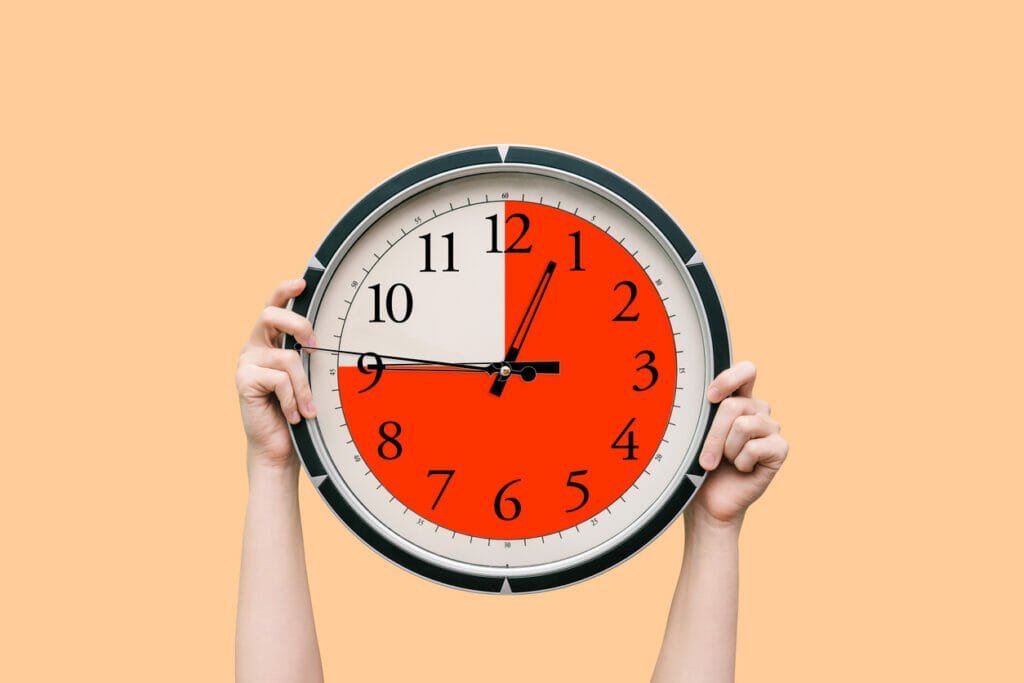The Chinese calendar, also known as the 农历 (Nónglì) or agricultural calendar, is one of the oldest calendar systems in the world. It is a lunisolar calendar, which means it tracks both the moon’s phases and the Earth’s orbit around the Sun. This calendar plays a central role in Chinese culture, determining the dates of major festivals, agricultural activities, and many traditional customs. In contrast, the Western calendar, or 公历 (Gōnglì), commonly known as the Gregorian calendar, is purely solar and is the standard system used across much of the world today.
If you’re interested in learning more about Chinese culture, language, and traditions, we invite you to explore the Chinese language courses at LC Chinese School in Oslo. Whether you’re a beginner or an advanced learner, we offer flexible classes to suit your schedule. Register now at LC Chinese School in Oslo.
In this article, we will explore the structure of the Chinese calendar, its historical and cultural significance, and how it compares to the Western calendar. We’ll also delve into how the calendar influences major Chinese festivals, offering a comprehensive look at the role of time in Chinese culture.
Table of Contents
ToggleThe Structure of the Chinese Calendar
The Chinese calendar is lunisolar, meaning it is based on the movements of both the moon and the sun. This dual system reflects the traditional Chinese understanding of time as a balance between 阴 (Yīn) and 阳 (Yáng), the complementary forces that govern all aspects of life. The calendar’s purpose was originally to guide agricultural activities, but over time, it has become a vital part of Chinese culture and daily life.
Lunisolar Nature
The Chinese calendar follows the phases of the moon to determine the length of a month. A new moon, or 新月 (Xīnyuè), marks the beginning of each month, which typically lasts about 29.53 days. Since this lunar cycle is shorter than the Earth’s orbit around the Sun (365.24 days), a lunar year has approximately 354 days—about 11 days shorter than the solar year. This discrepancy means that the Chinese calendar would fall out of sync with the seasons without adjustments.
To keep the calendar aligned with the seasons, an extra month, known as a leap month (闰月 Rùnyuè), is added roughly every two to three years. This leap month ensures that the lunar calendar remains synchronized with the solar year, preventing important festivals such as 春节 (Chūnjié, or Chinese New Year) from drifting too far from their intended seasonal context.
12-Year Zodiac Cycle
Another key feature of the Chinese calendar is its 12-year zodiac cycle, or 生肖 (Shēngxiào). Each year in the cycle is associated with one of 12 animals, each of which is believed to exert an influence on the personalities and destinies of people born under its sign. The 12 zodiac animals are:
- 鼠 (Shǔ) – Rat
- 牛 (Niú) – Ox
- 虎 (Hǔ) – Tiger
- 兔 (Tù) – Rabbit
- 龙 (Lóng) – Dragon
- 蛇 (Shé) – Snake
- 马 (Mǎ) – Horse
- 羊 (Yáng) – Goat
- 猴 (Hóu) – Monkey
- 鸡 (Jī) – Rooster
- 狗 (Gǒu) – Dog
- 猪 (Zhū) – Pig
These zodiac animals rotate in a repeating 12-year cycle, influencing not only personal characteristics but also major events and even national fortunes in a given year. For example, 2024 will be the 龙年 (Lóng Nián), or Year of the Dragon, which is considered an auspicious and powerful year.
Each zodiac year is also associated with one of the five elements—Wood (木 Mù), Fire (火 Huǒ), Earth (土 Tǔ), Metal (金 Jīn), and Water (水 Shuǐ)—adding further complexity to the Chinese calendar system. This results in a 60-year cycle, combining the 12 zodiac animals with the five elements, creating a rich and detailed astrological system that guides decision-making, fortune-telling, and even daily activities.
The 24 Solar Terms
An important feature of the Chinese calendar is the system of 节气 (Jiéqì), or solar terms. The year is divided into 24 solar terms, each lasting about 15 days, which help guide agricultural activities and mark seasonal changes. These solar terms include well-known points such as the 春分 (Chūnfēn, Spring Equinox) and 冬至 (Dōngzhì, Winter Solstice), as well as more specialized terms like 立春 (Lìchūn, the Beginning of Spring) and 芒种 (Mángzhòng, Grain in Ear).
The 24 solar terms ensure that even though the months in the Chinese calendar follow the lunar cycle, important seasonal activities, such as planting and harvesting, remain aligned with the solar year. This system reflects the traditional Chinese view of time as a harmonious interaction between the heavens, the earth, and human activity.
The Gregorian Calendar: The Western Standard
In contrast to the Chinese lunisolar calendar, the Western or Gregorian calendar is purely solar, meaning it is based solely on the Earth’s orbit around the Sun. It was introduced by Pope Gregory XIII in 1582 as a refinement of the earlier Julian calendar, which had been introduced by Julius Caesar in 45 BCE. The Gregorian calendar is now the most widely used calendar system in the world.
Structure of the Gregorian Calendar
The Gregorian calendar consists of 12 months, each with a fixed number of days, except for February, which has 28 days in a common year and 29 days in a leap year. A leap year occurs every four years to account for the approximately 0.24 extra days it takes for the Earth to complete its orbit around the Sun. This system keeps the calendar aligned with the solar year, ensuring that seasonal events, such as the solstices and equinoxes, occur at roughly the same time each year.
While the Gregorian calendar is simpler than the Chinese lunisolar calendar, it lacks the flexibility to account for lunar phases. This is why some Western holidays, like Easter, are based on a lunar calculation similar to the Chinese calendar, while others, such as Christmas, are fixed on specific dates regardless of the moon’s cycle.
Key Differences Between the Chinese and Western Calendars
Although both the Chinese and Western calendars serve to organize time and mark important events, they are fundamentally different in structure and cultural significance.
1. Lunar vs. Solar Focus
The most obvious difference between the two systems is that the Chinese calendar follows the cycles of the Moon, while the Gregorian calendar is based on the Earth’s orbit around the Sun. The lunar months of the Chinese calendar align with the Moon’s phases, whereas the Gregorian calendar’s months are purely solar and have no connection to the moon’s cycle.
2. Leap Years and Leap Months
In the Gregorian calendar, a leap year occurs every four years to add a single extra day to the year. The Chinese calendar, on the other hand, uses a leap month every two to three years to reconcile the shorter lunar year with the solar year. The leap month ensures that festivals remain in their correct seasonal context, while the leap day in the Gregorian calendar prevents seasonal drift over time.
3. Festivals and Holidays
The Chinese calendar determines the dates of most traditional Chinese festivals, which are deeply connected to the lunar and solar cycles. For instance, 春节 (Chūnjié, Chinese New Year) occurs on the first day of the first lunar month, while the 中秋节 (Zhōngqiū Jié, Mid-Autumn Festival) takes place on the 15th day of the eighth lunar month, when the moon is at its fullest.
In contrast, Western holidays like Christmas and New Year’s Day have fixed dates in the Gregorian calendar. However, some Christian holidays, such as Easter, are calculated based on the lunar cycle, echoing the Chinese calendar’s approach to festival timing.
4. Zodiac and Astrology
The Chinese zodiac is an integral part of the Chinese calendar, with each year being associated with a different zodiac animal. These animals are believed to influence the personality traits of people born in a particular year, as well as the general fortunes of that year.
In the West, astrology is typically based on the position of the Sun and other celestial bodies at the time of a person’s birth, but it is not directly tied to the calendar system. Western astrological signs, such as Aries, Taurus, and Gemini, are based on the Earth’s position relative to the stars, and they follow the solar calendar rather than the lunar cycle.
Chinese Festivals and Their Calendar Influence
The Chinese calendar is central to the timing of major festivals and holidays, each of which has its own unique traditions and cultural significance. Below, we explore some of the most important Chinese festivals and their connection to the lunar and solar cycles.
Chinese New Year (春节 Chūnjié)
Chinese New Year, also known as the Spring Festival, is the most important holiday in the Chinese calendar. It begins on the first day of the first lunar month, usually between January 21 and February 20 in the Gregorian calendar, and lasts for 15 days. The festival marks the beginning of a new year according to the lunar calendar, and each year is associated with a zodiac animal.
Families celebrate with large feasts, reunions, and the exchange of red envelopes (红包 Hóngbāo) containing money. Fireworks and lion dances are also common during this time, as they are believed to ward off evil spirits and bring good fortune.
Lantern Festival (元宵节 Yuánxiāo Jié)
The Lantern Festival takes place on the 15th day of the first lunar month, marking the end of the Chinese New Year celebrations. People celebrate by lighting and releasing lanterns, symbolizing the letting go of past troubles and the welcoming of new beginnings. It is also customary to eat 汤圆 (Tāngyuán), sweet glutinous rice balls, which represent family unity and togetherness.
Mid-Autumn Festival (中秋节 Zhōngqiū Jié)
The Mid-Autumn Festival is celebrated on the 15th day of the eighth lunar month, usually in September or October on the Gregorian calendar. This festival is dedicated to the harvest and the full moon, which symbolizes family reunion. People celebrate by eating 月饼 (Yuèbǐng, mooncakes), which are filled with sweet or savory ingredients. Families gather to admire the full moon, exchange gifts, and share in the spirit of unity and gratitude.
Qingming Festival (清明节 Qīngmíng Jié)
Also known as Tomb-Sweeping Day, Qingming is held around April 4th or 5th on the Gregorian calendar, aligning with the solar term 清明 (Qīngmíng), which marks the clear and bright weather of early spring. This festival is a time to honor ancestors by cleaning their graves and making offerings of food and incense. It is also a time for families to enjoy outdoor activities, reflecting the renewal and vitality of spring.
Conclusion
The Chinese calendar, with its intricate lunisolar system, plays a vital role in Chinese culture, shaping not only the passage of time but also the festivals, traditions, and daily lives of millions. In contrast, the Western Gregorian calendar is simpler, focusing solely on the solar year, but both calendars serve their respective societies in organizing time and marking significant events.
For those eager to learn more about Chinese traditions, culture, and language, consider enrolling in Chinese classes at LC Chinese School in Oslo. Our flexible courses accommodate all levels of learners, from beginners to advanced speakers. Sign up today at LC Chinese School in Oslo. Immerse yourself in the beauty and complexity of Chinese culture, and embark on a journey of discovery!







